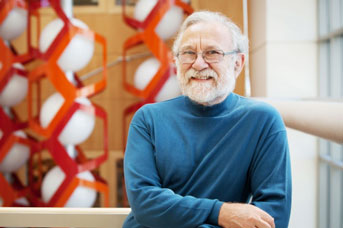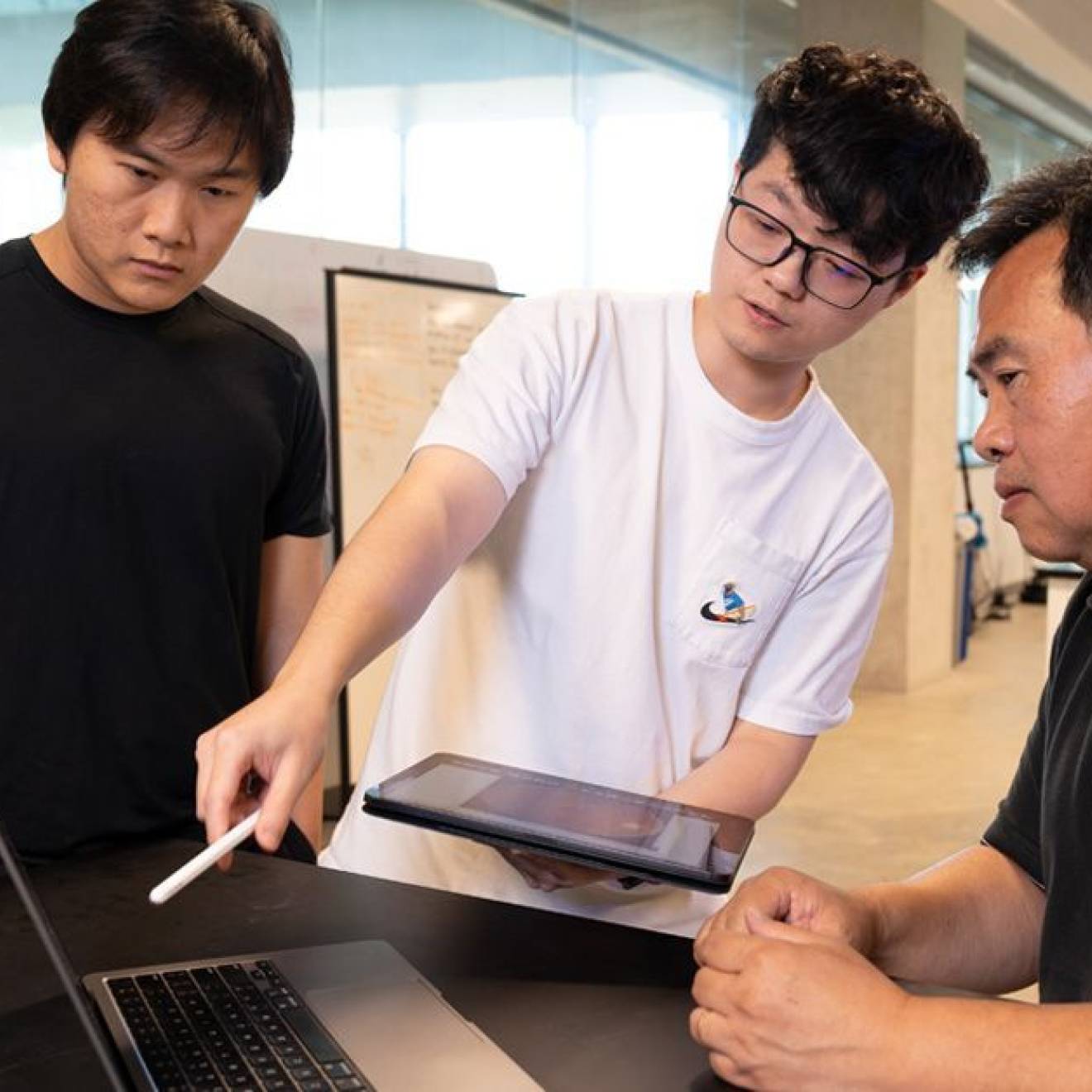Pete Farley, UCSF
In an unprecedented finding, UC San Francisco scientists used an experimental drug to completely reverse severe learning and memory impairments caused by traumatic brain injury (TBI) in mice. Surprisingly, the drug fully restored the ability to learn and remember in the brain-injured mice even when the animals were first treated as much as a month after injury.
The latter results are particularly striking, as most research on brain injury and stroke has suggested that treatments must be initiated as quickly as possible to preserve normal function.
The researchers said the new study offers a promising new avenue for the treatment of TBI in humans, which affects nearly two million individuals annually in the U.S. — one every 21 seconds. In addition to causing serious cognitive deficits, which can be short-lived or permanent, TBI is also a leading risk factor for the development of Alzheimer’s disease and other forms of dementia. But dozens of seemingly promising treatments have failed in clinical trials, and no approved therapies are currently available.
Two types of brain injuries
The drug used in the new research, known as ISRIB (pronounced “iz-rib”), was discovered in 2013 in the laboratory of Peter Walter, professor of biochemistry and biophysics at UCSF and co-senior author of the new study, which will be published online during the week of July 10, 2017, in Proceedings of the National Academy of Sciences. ISRIB was licensed in 2015 to Calico, a company involved in understanding the biology that controls the human lifespan.

Credit: UCSF
“This is extraordinarily exciting,” said Walter, also a Howard Hughes Medical Institute (HHMI) investigator. “We think that ISRIB may uncover an untapped reservoir in the brain that allows damaged memory circuits to be repaired.”
In the new research, scientists in the laboratory of co-senior author Susanna Rosi, professor of physical therapy and rehabilitation sciences and of neurological surgery at UCSF, tested whether ISRIB — which had previously been shown by Walter and colleagues to enhance memory in normal mice — could improve the ability to learn and form memories in mice with two different types of brain injury, each of which are known to degrade learning and memory in humans.
“In general, animals with these injuries never learn well again,” said Rosi, a member of the UCSF Weill Institute for Neurosciences and director of neurocognitive research at UCSF’s Brain and Spinal Injury Center, located at partner institution Zuckerberg San Francisco General Hospital. “So it’s remarkable that ISRIB could restore the ability to form new memories even when we delayed giving the drug for four weeks after the injury. This has not been considered possible.”
Localized brain injuries called focal contusions can affect spatial memory, which helps both mice and humans navigate through the world and complete necessary everyday tasks. Concussive brain injuries – which cause diffuse trauma to the whole brain – can degrade “working memory,” a temporary storage system that is critical for reasoning and decision-making.
Restoration of ability to learn persisted
To test ISRIB’s potential effects after focal injury, both normal and brain-injured mice were placed in a “radial-arm water maze,” in which they had to learn the location of a platform hidden under milky water in one of eight arms of the maze.

Credit: UCSF
Mice are averse to swimming, and after a brief training period normal mice improve steadily on this task, eventually finding the platform quite quickly after being placed into the maze. But brain-injured mice continue to make errors — swimming into incorrect arms of the maze in search of the platform — with no sign of improvement, long after training.
In the new research, however, when brain-injured mice were given three injections of ISRIB beginning four weeks after injury (the injections were spaced one day apart), their performance in the maze was indistinguishable from that of normal mice, and the restoration of their ability to learn persisted for a week after the last injection.
Given ISRIB’s pharmacology, Rosi said, the persistence of its effects is intriguing, and indicates that it may induce some durable change in the brain. “ISRIB’s half-life is less than a day, and when the mice demonstrated intact memory ability a week after receiving it, we know there is only the most miniscule trace of the drug left in their bodies.”
To test whether ISRIB could restore working memory after concussive brain injury, members of Rosi’s lab used a modified Barnes maze, which resembles a tabletop perforated with 40 holes; one of these holes leads to an escape tunnel, which normal mice efficiently learn to locate.
As with the radial-arm water maze, brain-injured mice usually perform poorly on this test, but when the mice with concussive injuries received ISRIB injections — in this case, four daily injections, beginning two weeks after injury — they again performed as well as their normal counterparts.
Blocks part of the integrated stress response
ISRIB works by blocking a part of a protective cellular system known as the Integrated Stress Response, or ISR (the drug’s name means “Integrated Stress Response InhiBitor”). When cells are injured or under stress from infection or a lack of nutrients, the ISR slows down translation, the process by which the genetic instructions encoded within DNA are converted into functional proteins. By binding to a central cellular player involved in translation, ISRIB allows stressed cells to override the ISR, with protein translation proceeding apace.

Credit: UCSF
In addition to the memory experiments described in the new paper, Walter and Rosi report experiments with brain slices showing that both focal and concussive injury activate the ISR in the hippocampus, a brain region that is crucial for memory, and that the ISR remains active for 28 days after the injury. Applying ISRIB to the slices not only dampened the effects of the ISR, but restored a process known as long-term potentiation, or LTP, a persistent strengthening of neural connections that is believed to be crucial to the formation of new memories.
Walter, who has won both the Albert Lasker Basic Medical Research Award and the Shaw Prize, two of the most prestigious prizes in biomedicine, for groundbreaking work on a system closely related to the ISR, believes that ISRIB may reverse memory loss in damaged nerve cells by restoring proper control of the synthesis of proteins that are essential to LTP and other cellular bases of memory. But he and Rosi “are still in a discovery phase” in understanding ISRIB’s mechanism of action, Walter said. “We are exploring. We are going into the unknown.”
And as startling as the new results are, Rosi said, the drug’s effectiveness must undergo many more studies before it would be a candidate for clinical trials to treat brain-injured patients, work that she and Walter are undertaking with an Innovation Award from the UCSF Weill Institute for Neurosciences, which they shared in October 2016 for their work on ISRIB and TBI.
“We need to do much more research,” Rosi said, “but I have high hopes that this drug can bring back lost memory capacity to our patients who have suffered brain injuries.”
In addition to Walter and Rosi, UCSF authors of the new study include Austin Chou, a graduate student in the Department of Neurological Surgery; Karen Krukowski, a postdoctoral scholar; and Timothy Jopson, a former research associate. They were joined by Ping Jun Zhu and Mauro Costa-Mattioli, both in the Department of Neuroscience at Baylor College of Medicine.
The research was supported by the Rogers Family Foundation, the National Institutes of Health, and HHMI.

